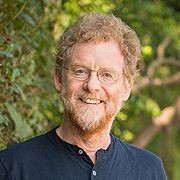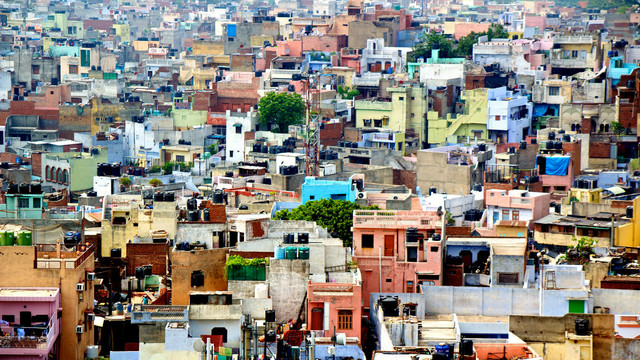Q&A: Two years on, blog series maintains its focus – in changing and challenging times
After two years writing and curating 50 blogs on the transition to a predominantly urban world – including the coronavirus pandemic – David Satterthwaite reflects on the key lessons and issues.
 IIED launched the blog series ‘The transition to a predominantly urban world’ in January 2020 to examine different aspects of local and global urban change and what drives or shapes them – as well as local responses including those addressing COVID-19 and the climate emergency.
IIED launched the blog series ‘The transition to a predominantly urban world’ in January 2020 to examine different aspects of local and global urban change and what drives or shapes them – as well as local responses including those addressing COVID-19 and the climate emergency.
In this interview IIED senior associate David Satterthwaite (DS), who curates the series, reflects on the 50 blogs published to date. He highlights the topics that have really sparked readers’ interest and highlights what we can expect from future blogs.
To read more about how these blogs came about, see the first interview with David that introduced the series.
Q: Why did you choose blogs to explore these issues?
DS: Blogs are quicker and easier to write than journal articles or book chapters. They can be personal responses to current events or discussions, or about their authors’ work on the ground. This has encouraged grassroots organisations and senior government staff (who would not usually write for an academic journal) to contribute.
What I hope we provide is a blog each fortnight that anyone interested in, or working on, urban issues will find a good read. We think some will surprise the reader – for instance the many ways grassroots organisations helped tackle COVID-19. Or intrigue them. Why is there a blog on motorcycles? What is meant by the cry from community organisations “We want greens” and, coming later in 2022 – do London’s parks have lessons for other cities?
Q: Can you give an overview of how this blog series has progressed?
DS: The first blog looked at the world’s 100 largest cities and how their scale has changed over the last 220 years. The next seven were also ‘big picture’ stuff such as what is driving the world’s changing urban geographies; can a country be successful without large cities; and which are the fastest – and slowest – growing cities?
But as we began to see the devastating impacts of COVID-19, we invited guest bloggers to write about their community’s responses to the pandemic – community leaders in cities including Chiang Mai, Dhaka, Karachi, Mumbai, Patna, Quezon City and Guayaquil.
A blog by Theresa Carampatana and Rolando A Tuazon drew on discussions with community leaders from the Homeless People’s Federation of the Philippines in Batasan, Cebu, Davao, Iloilo, Muntinlupa, NCR, Rodriguez-Rizal and Valenzuela. Antarin Chakrabarty’s blogs covered a state-wide initiative that includes many urban centres.
I continued to write blogs on ‘big picture’ stuff – for instance the lack of city and sub-city data needed to govern cities, the overlooked role of smaller urban centres, getting housing back on the development agenda, transformatory informal settlement upgrading and rethinking responses to urban poverty (with Diana Mitlin).
Q: Did any particular themes emerge from the guest bloggers?
DS: Yes. Notable topics have included:
- Deficiencies in the local data needed to plan, manage and govern cities but also examples of where this had been addressed
- How comprehensive, community-led informal settlement upgrading has much to contribute to climate change adaptation
- Innovations driven by grassroots organisations and their federations, and the support they need but rarely get
- Ensuring access to food and reaching those most in need – the focus of 'Feeding all city inhabitants' by Cecilia Tacoli, and featuring prominently in many others, including two that included the demand “we want greens” when food distribution systems in response to COVID-19 did not include fresh veg or fruit, and
- Many included new urban agriculture initiatives, such as a blog by Supawut Boonmahathanakorn about a 4.8 hectare community-led urban farm in Chiang Mai and one by Ofelia Bagotlo on support for 150 community gardens in Quezon City.

Ofelia Bagotlo spraying liquid fertiliser on longbeans in Quezon City (Photo: copyright Ofelia Bagotlo)
Q: Who are the guest bloggers?
DS: Since its foundation in 1977, IIED’s Human Settlements research group has given priority to authors from the global South. This is also the case for our journal, Environment and Urbanization. For this blog series, to date,19 blogs were authored by global South writers, eight by those from the global North.
We are also committed to gender equality in blog authors; 19 of the 30 guest blog authors to date are women. We also seek ways to give grassroots leaders a louder voice; several blogs have been from these leaders or developed from interviews with them.
Q: Which blogs have sparked particular interest?
DS: Many of the blogs with the highest number of page views were from community leaders writing about their fight against COVID-19. Within this, there was great interest in the work of the Philippines Homeless People’s Federation with three blogs and 22,870 page views (Ruby Papeleras, Migo Gaddi, Theresa Carampatana, Rolando A Tuazon and Ofelia Bagotlo).
Other papers on community/local responses to COVID-19 described the situation on the ground in Dhaka (John Taylor, 5,138 page views), Odisha (Antarin Chakrabarty, 2,130), Mumbai (Selvi Manivanan Devandra, 1,108), Karachi (Arif Hasan, 5,463), Patna (Smriti Singh, 702) and Chiang Mai (Supawut Boonmahathanakorn, 938).

Women in Dhaka, Bangladesh receive aid during the COVID-19 pandemic (Photo: UN Women/Fahad Abdullah Kaizer, via Flickr, CC BY-NC-ND 2.0)
Q: Were there any other topics that struck a chord with your readers?
DS: Many blogs drew attention to the lack of city/sub-city data needed for planning and governing cities and their informal settlements. These included seven blogs specifically on data issues which received 4,803 page views.
Other than some of the blog authors mentioned in previous answers above, the most published and read guest bloggers are: Arif Hasan, author/co-author of four blogs (9,973 page views); Sheela Patel, author/co-author of five blogs (2,930); Isabelle Anguelovski (2,053) and Caroline Moser (1,332).
Q: With the 2022 Intergovernmental Panel on Climate Change (IPCC) report illustrating the continuing and urgent need for action, the warnings of the climate emergency rang loud and clear. What are the implications for cities?
DS: All cities need to integrate climate change adaptation into their development plans. But it’s difficult to see how this can be done with the lack of funding, competence, accountability and capacity of most local government, as well as the very large backlogs in what the IPCC terms risk-reducing infrastructure and services.
All cities also need to see where and how they can contribute to reducing greenhouse gas emissions – although this applies most to wealthy cities.
Q: What can readers expect from future blogs?
DS: We intend to keep this blog series going as long as it retains its popularity. The focus on responses to COVID-19 will continue. We worry that the apparently low scale of deaths in most low-income nations is because of undercounting.
Of course, the focus on the climate emergency will continue. There are also influences on urban change that need more attention – for instance that of large refugee and internally displaced populations, as described in my colleague Lucy Earle’s blog.
We may experiment with podcasts. And we will be inviting a diverse range of people to blog about future perspectives as we continue the transition to a predominantly urban world.
- Read the latest blog in the transition to a predominantly urban world series.

